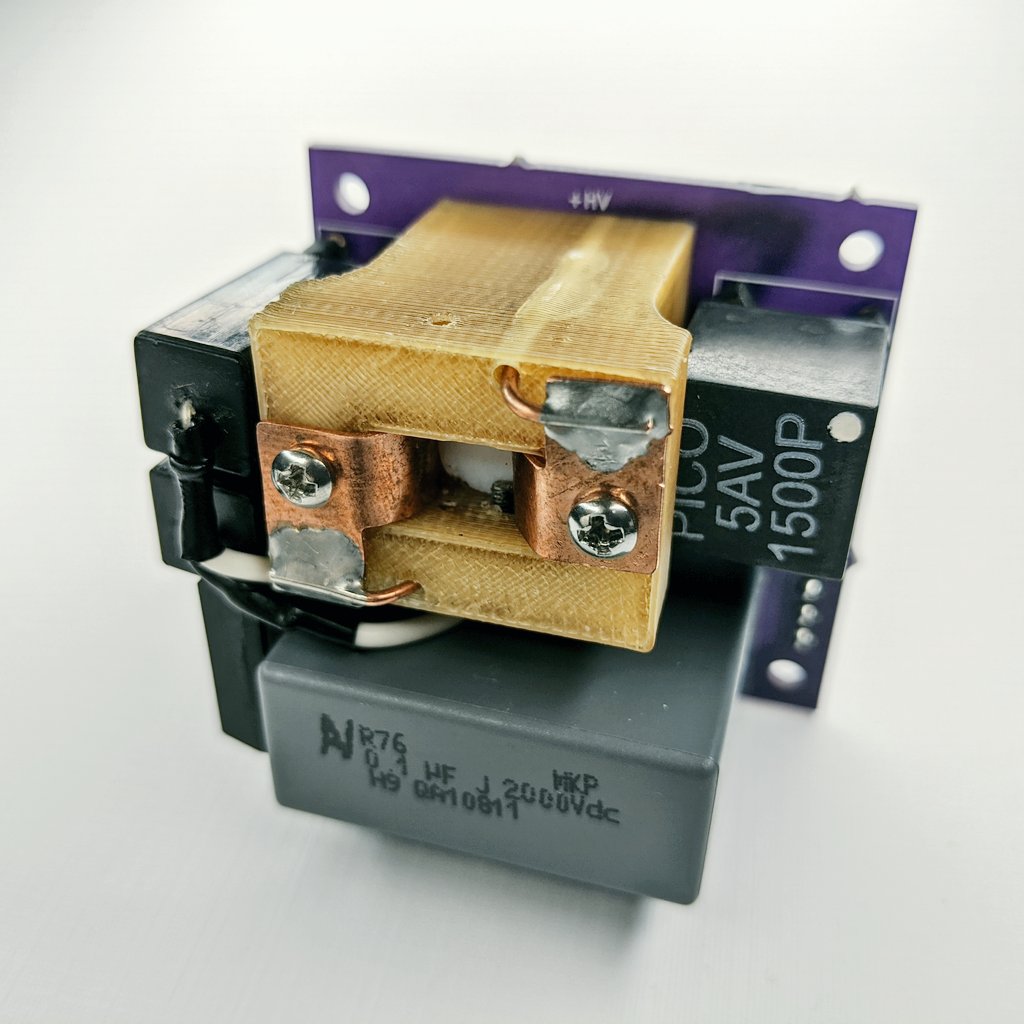Last night I ran the second ignition test of the AIS-EPPT1 micro pulsed plasma thruster! For this test the thruster was modified for unconventional triggering to the anode with great success. During prior testing, it was observed that the igniter had much more tendency to arc to the charged anode, rather than the grounded cathode, even though the distance was significantly further. This can be possibly attributed to the fact that the ignition pulse is up to -10kV, where the anode is at +1.5kV, creating a higher potential difference. The ignition pulse also raises the local fields briefly, making breakdown easier to occur. I decided for this test, why fight what was happening naturally! So, I moved the igniter pin to the other side of the thruster housing, placed purposely close to the anode.

This first video shows thruster start-up.
In this second video, the thruster now operating at a higher rep rate around 2 Hz. While there are a couple of misfires, during the misfires the ignition pulse is clearly visible, much stronger than any prior PPT tests, showing better pre-ionization in this configuration.
In this third video, we can see the igniter firing at close to 3Hz. Although I couldn’t yet achieve repeated ignition at this rate, the trigger pulse is again very strong and controlled, even at this higher rep rate at such an incredibly low power level for a PPT.
Despite the challenges, progress is still moving forward on the EPPT1. Anode-side triggering for PPTs has some interesting promise and potential, and will be explored further moving forward. This test also confirmed my initial hypothesis that with triggering to the anode, some of the stored energy in the main bank gets diverted through the ignition pulse, leading to a much more intense ignition pulse.
